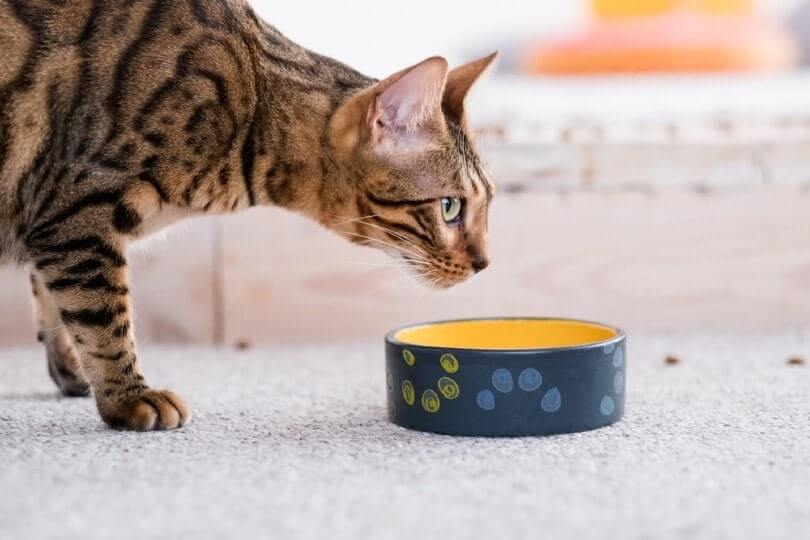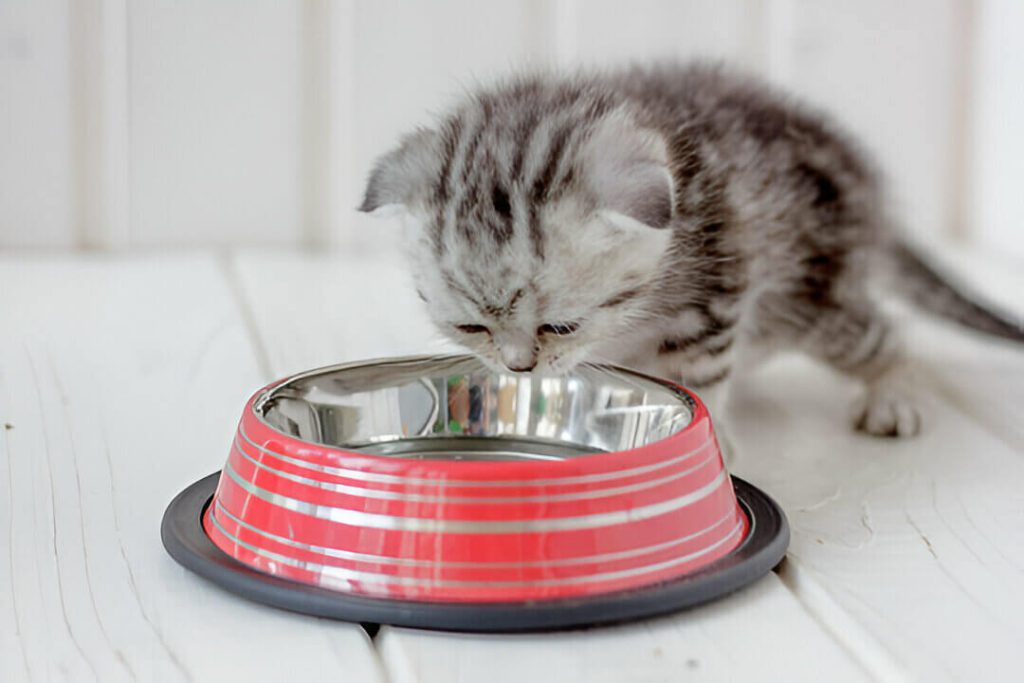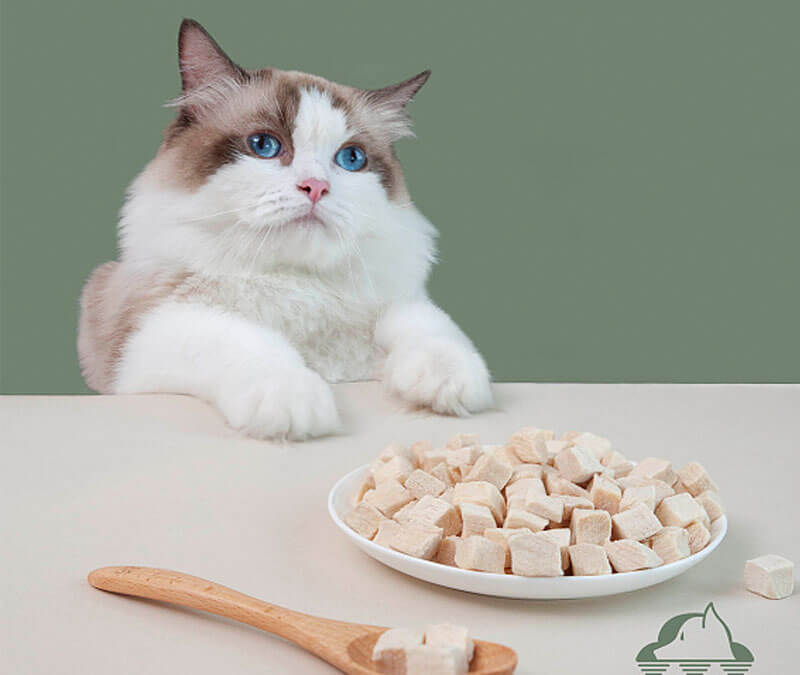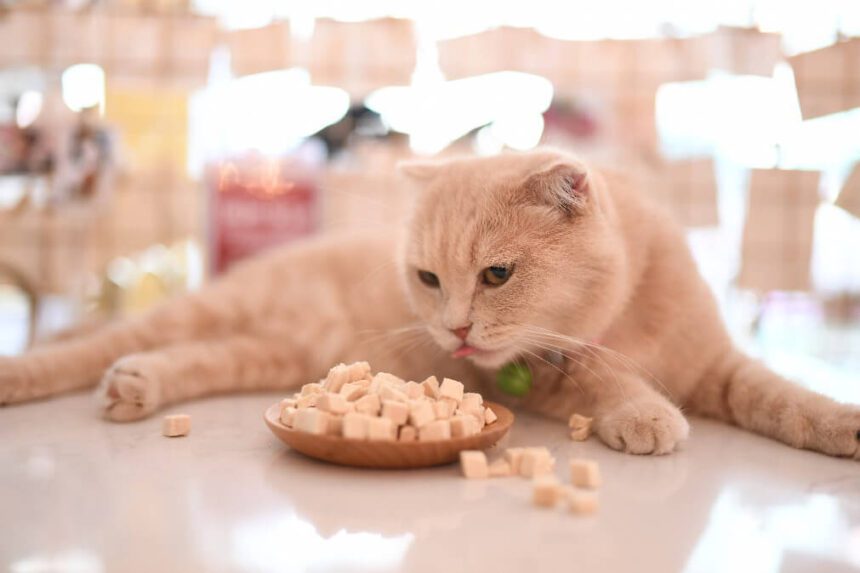Feeding our furry feline friends can sometimes feel like a maze. With so many options out there, finding the best and healthiest choice is essential. Enter freeze-dried cat food—a popular, nutritious option that promises convenience without compromising on quality.
If you’re wondering how to feed freeze-dried cat food to your cat, you’re in the right place. This detailed guide will walk you through everything you need to know, from understanding the food itself to practical feeding tips.
what is Freeze-Dried Cat Food
First things first, let’s get to grips with what freeze-dried cat food actually is. Essentially, it’s raw food that has had almost all of its moisture removed through a process called freeze-drying. This method preserves the nutritional integrity of the food, keeping all those essential vitamins, minerals, and natural enzymes intact. The end result is a lightweight, shelf-stable product that’s easy to store and serve.
Why Choose Freeze-Dried?
Freeze-dried cat food mimics a cat’s natural diet, which is high in protein and low in carbs. Unlike heavily processed kibble or some wet foods, freeze-dried retains much of the original nutritional value of raw ingredients. Plus, many cats find the taste and texture appealing, making it an excellent choice for picky eaters.
How to Feed Freeze-Dried Cat Food

Switching your cat to a new type of food should always be a gradual process. Cats have sensitive digestive systems, and sudden changes can cause upset stomachs or refusal to eat. Here’s how to introduce freeze-dried cat food slowly:
Start Mixing: Begin by mixing a small amount of freeze-dried food with your cat’s current food. Over several days, gradually increase the proportion of freeze-dried food while decreasing the old food.
Observe: Watch for any signs of digestive upset such as vomiting or diarrhea. If your cat seems uncomfortable, slow down the transition.
Patience is Key: Some cats take longer to adjust than others. Be patient and give them time to get used to the new taste and texture.
Portion Control
Just like with any other type of cat food, portion control is crucial with freeze-dried cat food. Overfeeding can lead to obesity and other health issues, while underfeeding can leave your cat hungry and malnourished. Here are some tips to get the portions right:
Follow Guidelines: Most freeze-dried cat food packages come with feeding guidelines based on your cat’s weight and activity level. Use these as a starting point.
Adjust as Needed: Monitor your cat’s weight and overall condition. If your cat starts gaining or losing weight, adjust the portions accordingly.
Regular Meals: Stick to regular feeding times and avoid free-feeding. This helps regulate your cat’s diet and prevents overeating.
Monitor Water Intake

Even though you’re rehydrating the freeze-dried food, it’s still important to ensure your cat is drinking enough water. Cats typically don’t drink a lot on their own, which can lead to dehydration. Here’s how to keep track:
Fresh Water Always: Make sure fresh water is always available. Clean the water bowl daily to keep it appealing.
Check for Dehydration: Signs of dehydration include lethargy, dry mouth, and sunken eyes. If you notice any of these, encourage your cat to drink more water or consult your vet.
Water Fountains: Some cats prefer running water. A cat water fountain can encourage them to drink more.
How to Store Freeze-Dried Cat Food
Proper storage of freeze-dried cat food is essential to maintain its quality and nutritional value. Here’s how to store it correctly:
Cool, Dry Place: Keep the food in a cool, dry place away from direct sunlight. Heat and moisture can degrade the quality.
Seal Tightly: Once opened, make sure the package is sealed tightly. Some freeze-dried foods come with resealable bags, but if not, use an airtight container.
Use Within Guidelines: Pay attention to the use-by date on the package. Freeze-dried food can spoil if kept for too long.
Consult Your Vet
Before making any significant changes to your cat’s diet, it’s always a good idea to consult with your veterinarian. They can provide personalized advice based on your cat’s health status and dietary needs. If your cat has any underlying health issues, your vet can help determine if freeze-dried food is the right choice.
Rehydrating Freeze-Dried Food
One of the key steps in feeding freeze-dried cat food is rehydration. Since the freeze-drying process removes almost all moisture, it’s essential to add water back to the food before serving it to your cat. Here’s how to do it right:
Add Water: Pour warm water over the freeze-dried food. The amount can vary based on the product, so follow the guidelines on the package.
Soak Time: Let the food soak for a few minutes. This allows the food to absorb the water and rehydrate properly.
Check Consistency: The food should be soft and moist but not overly watery. Adjust the water amount as needed to reach the desired consistency.
Serve: Ensure the food is at room temperature before serving. Cats can be particular about the temperature of their food.
Benefits of Freeze-Dried Cat Food

There are several reasons why freeze-dried cat food is gaining popularity among pet owners. Here are some of the key benefits:
Nutrient Preservation: The freeze-drying process preserves the natural enzymes, vitamins, and minerals in the food.
Long Shelf Life: Freeze-dried food has a long shelf life without the need for preservatives, making it a convenient option.
Weight Management: High protein content and lower carbohydrate levels can aid in weight management for cats.
Palatability: Many cats love the taste and texture of freeze-dried food, making it an excellent choice for picky eaters.
Possible Concerns
While freeze-dried cat food has many benefits, there are some considerations to keep in mind:
Cost: Freeze-dried cat food can be more expensive than traditional options.
Hydration: Ensuring your cat stays hydrated is crucial when feeding freeze-dried food.
Quality Variation: Choose reputable brands that use high-quality ingredients and maintain rigorous quality control.
How To Prepare Freeze-Dried Cat Food?
Preparing freeze-dried cat food is straightforward but requires a few steps to ensure your cat gets a nutritious meal. Here’s how:
Measure the Right Amount: Based on your cat’s weight and the feeding guidelines on the package, measure the appropriate amount of freeze-dried food.
Rehydrate: Add warm water, broth, or wet cat gravy to the freeze-dried food. Stir the mixture and let it sit for a few minutes until the food absorbs the liquid and becomes soft.
Serve: Ensure the food is at a safe temperature before serving it to your cat. Always provide fresh water alongside the meal.
Is Freeze-Dried Cat Food Better?
The question of whether freeze-dried cat food is better depends on various factors. It’s nutrient-rich and preserves the natural enzymes and vitamins, but it’s also pricier than regular cat food. The key is to consider your cat’s health needs and your preferences. Here’s a quick comparison:
Advantages
Nutrient-Rich: Freeze-drying preserves most of the nutrients.
Long Shelf Life: Convenient for storage.
Appealing Taste: Many cats prefer it.
Disadvantages
Cost: More expensive.
Hydration Needs: Requires careful attention to water intake.
How Long Can You Leave Out Freeze-Dried Cat Food?
If you serve freeze-dried cat food during meals, it should be left out for about 30 minutes. If it’s used as a between-meal treat, it should only remain out for 10 minutes. This ensures the food remains fresh and doesn’t become a breeding ground for bacteria.
Conclusion
Feeding your cat freeze-dried food can be a nutritious and convenient option. By understanding the process, following feeding guidelines, and ensuring proper hydration, you can provide your cat with a diet that supports their health and satisfies their taste buds.
For more information and tips, you can read our full guide on how to feed freeze-dried cat food on our blog. If you have any questions, feel free to leave a comment below!



